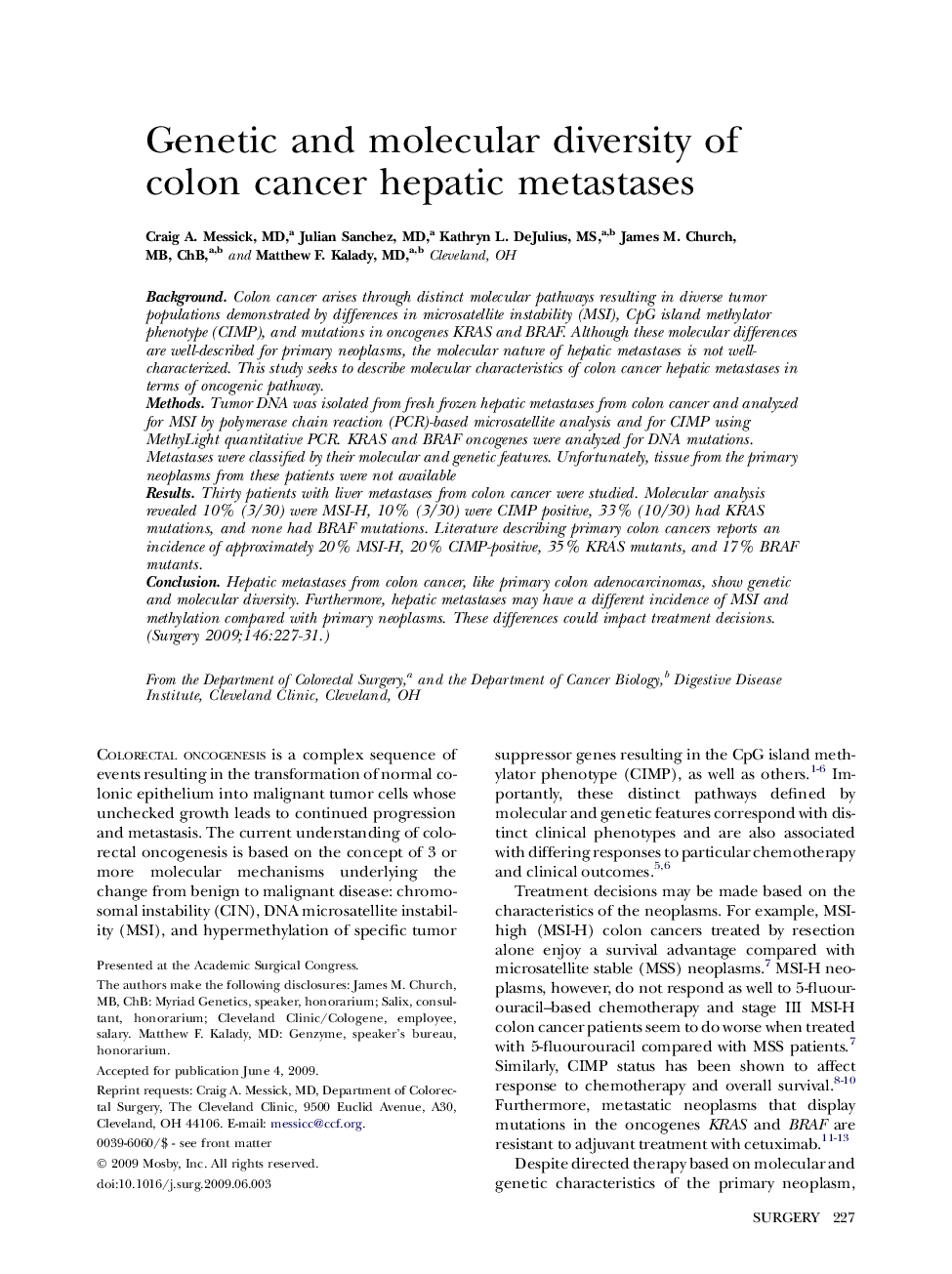| Article ID | Journal | Published Year | Pages | File Type |
|---|---|---|---|---|
| 4309386 | Surgery | 2009 | 5 Pages |
BackgroundColon cancer arises through distinct molecular pathways resulting in diverse tumor populations demonstrated by differences in microsatellite instability (MSI), CpG island methylator phenotype (CIMP), and mutations in oncogenes KRAS and BRAF. Although these molecular differences are well-described for primary neoplasms, the molecular nature of hepatic metastases is not well-characterized. This study seeks to describe molecular characteristics of colon cancer hepatic metastases in terms of oncogenic pathway.MethodsTumor DNA was isolated from fresh frozen hepatic metastases from colon cancer and analyzed for MSI by polymerase chain reaction (PCR)-based microsatellite analysis and for CIMP using MethyLight quantitative PCR. KRAS and BRAF oncogenes were analyzed for DNA mutations. Metastases were classified by their molecular and genetic features. Unfortunately, tissue from the primary neoplasms from these patients were not availableResultsThirty patients with liver metastases from colon cancer were studied. Molecular analysis revealed 10% (3/30) were MSI-H, 10% (3/30) were CIMP positive, 33% (10/30) had KRAS mutations, and none had BRAF mutations. Literature describing primary colon cancers reports an incidence of approximately 20% MSI-H, 20% CIMP-positive, 35% KRAS mutants, and 17% BRAF mutants.ConclusionHepatic metastases from colon cancer, like primary colon adenocarcinomas, show genetic and molecular diversity. Furthermore, hepatic metastases may have a different incidence of MSI and methylation compared with primary neoplasms. These differences could impact treatment decisions.
